Stories Category: Intensive Care

Readmissions for Recurrent Sepsis: New or Relapsed Infection?
Sepsis hospitalizations are frequently followed by hospital readmissions, often for recurrent sepsis. However, it is unclear how often sepsis readmissions are for relapsed/recrudescent vs. new infections. The aim of this... read more

Anabolic and Anticatabolic Agents in Critical Care
Profound metabolic derangements occur in critically ill patients; this hypermetabolic response is a major contributor to adverse outcomes. Despite the pharmacological therapies currently available to counteract this devastating... read more

Examining Mechanical Chest Compressions
Mechanical chest compression (CC) during cardiopulmonary resuscitation (CPR) with AutoPulse or LUCAS devices has not improved survival from cardiac arrest. Cohort studies suggest risk of excess damage. Therefore, Koster et... read more
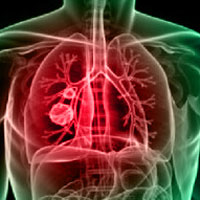
External Validity of Electronic Sniffers for Automated Recognition of ARDS
Automated electronic sniffers may be useful for early detection of acute respiratory distress syndrome (ARDS) for institution of treatment or clinical trial screening. Published electronic sniffer algorithms for ARDS may... read more
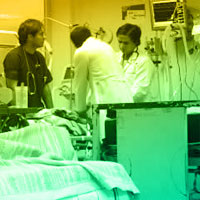
Ventilation Rate During Adult CPR with Tracheal Tube
The optimal ventilation rate during cardiopulmonary resuscitation (CPR) with a tracheal tube is unknown. A new systematic review finds that a ventilation rate recommendation of 10 min-1 during adult CPR with a secure airway... read more

Mechanisms of Severe Mortality-associated Bacterial Co-infections Following Influenza Virus Infection
The mechanisms of severe morbidity following influenza-bacteria co-infections mainly include failure of an antibacterial immune response and pathogen synergy. Moreover, failure to resume function and tolerance might be one... read more
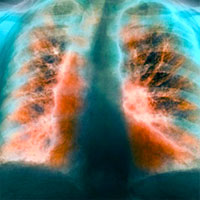
Clinical Impact of COPD on Non-cystic Fibrosis Bronchiectasis
Clinical impact of chronic obstructive pulmonary disease on non-cystic fibrosis bronchiectasis. A study on 1,790 patients from the Spanish Bronchiectasis Historical Registry. Patients with BE related to COPD have the same... read more

Doctors frustrated that electronic records steal time from patients
Researchers asked doctors licensed to practice in Rhode Island the question: How does using an EHR affect your interaction with patients? They got an earful. Most who responded complained that electronic records undermined... read more

Patients with postoperative delirium more likely to suffer dementia
Delirium is common in elderly hospitalized patients, affecting an estimated 14 - 56% of patients. It frequently manifests as a sudden change in behavior, with patients suffering acute confusion, inattention, disorganized... read more
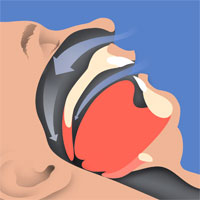
Effect of Obstructive Sleep Apnea Treatment on Renal Function in Patients with Cardiovascular Disease
Obstructive sleep apnea (OSA) is associated with impaired renal function, but uncertainty exists over whether OSA treatment can influence renal outcomes. Objectives: To determine the effects of continuous positive airway... read more

An Orthopedic Surgeon Explains: Diastolic Heart Failure
It seems that every now and then we have to deal with something other than the bones. As you can imagine, this is sub-optimal at best. Because bones. Anyhow, I’ve been asked to discuss one of those issues with you, and... read more

Link Between Diabetes and Hospital Readmission Rates
Patients with diabetes have higher rates of hospital readmission compared with patients without diabetes, according to a pilot study published in Clinical Diabetes and Endocrinology. In the first study, the readmission rate... read more

Growing Concerns of Hepatitis E in Europe
Cases of Hepatitis E in Europe have increased by 10x over 10 years, with 5617 cases in 2015. Testing, case definitions, diagnosis, and surveillance for HEV infection vary extensively across Europe, with only 20 member states... read more

Efficient Organization of ICUs with a Focus on Quality: The Non-Physician Provider
Adequate staffing in ICUs is an increasing problem worldwide. We would like to elaborate on staffing problems that arise in ICUs across Europe, including the Dutch situation. This staffing problem is caused by the increased... read more
When Evidence Says No, but Doctors Say Yes
Long after research contradicts common medical practices, patients continue to demand them and physicians continue to deliver. The result is an epidemic of unnecessary and unhelpful treatments.... read more
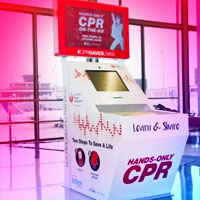
Airport CPR Training Kiosks
Three airports around the U.S. have joined an American Heart Association (AHA) initiative to provide hands-only CPR training kiosks for passengers waiting for flights. The Cleveland Hopkins International, Cincinnati/Northern... read more

Direct Oral Anticoagulant- or Warfarin-Related Major Bleeding
Direct oral anticoagulants (DOACs) have expanded the armamentarium for antithrombotic therapy. Although DOAC-related major bleeding was associated with favorable outcomes compared with warfarin in clinical trials, warfarin... read more








